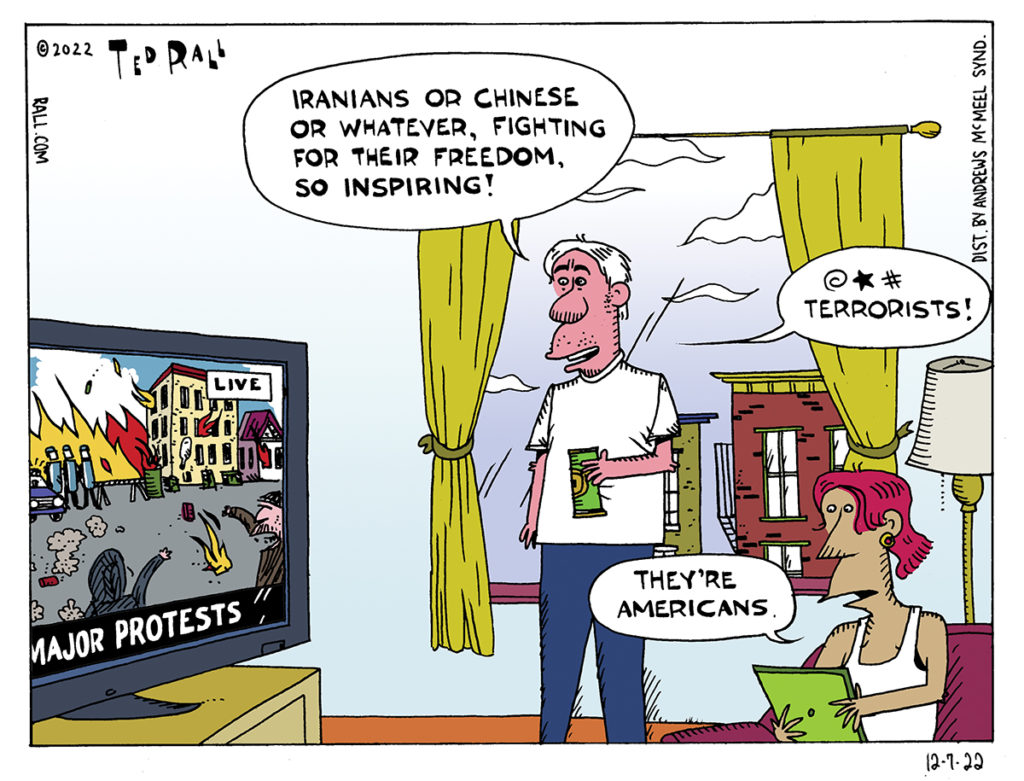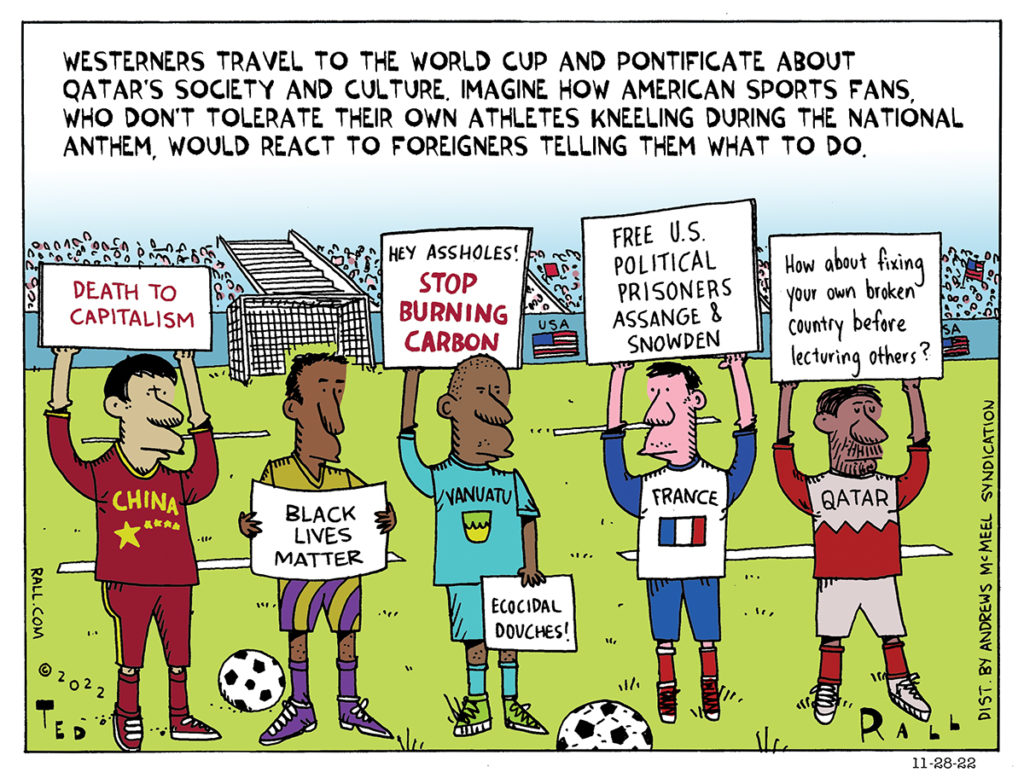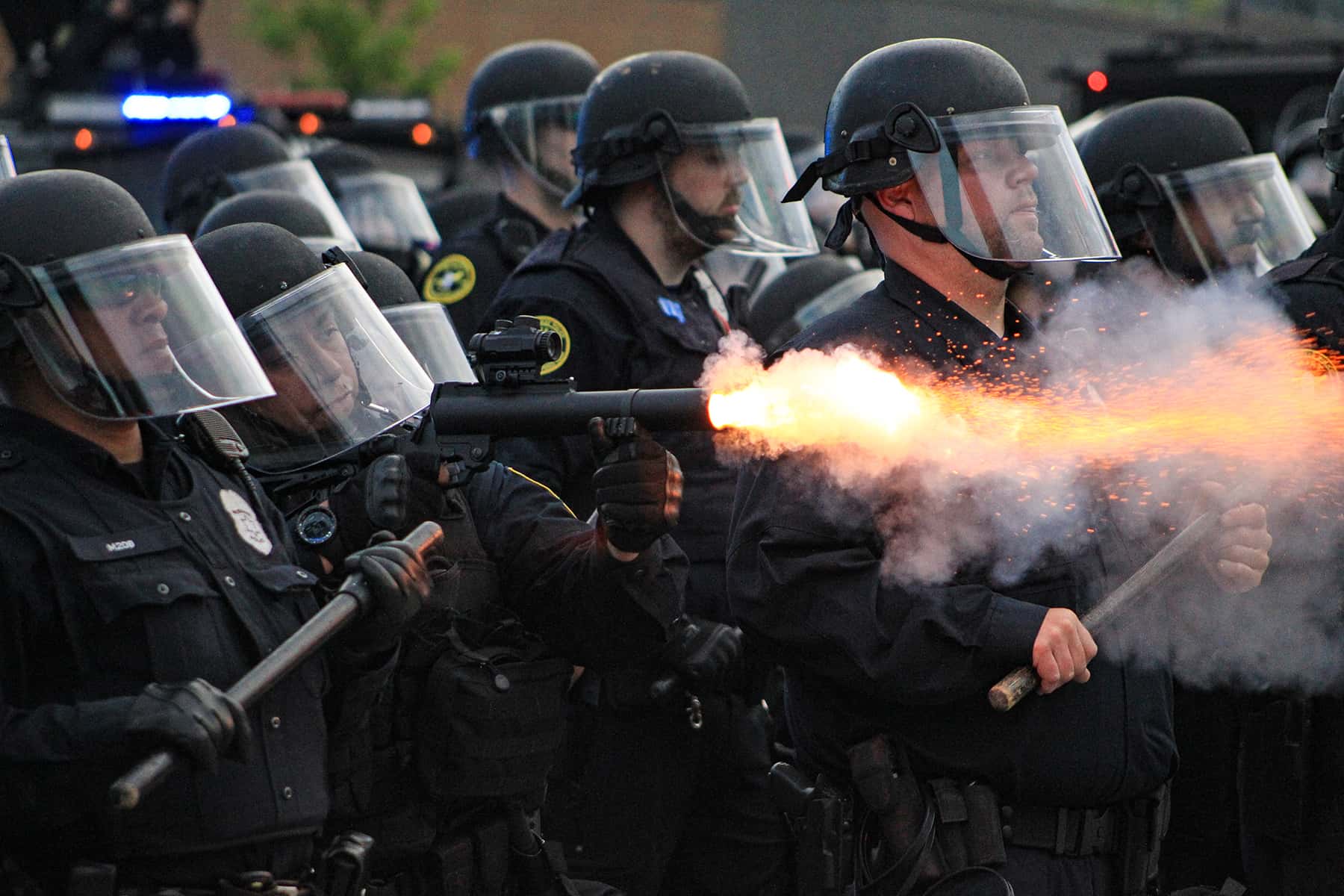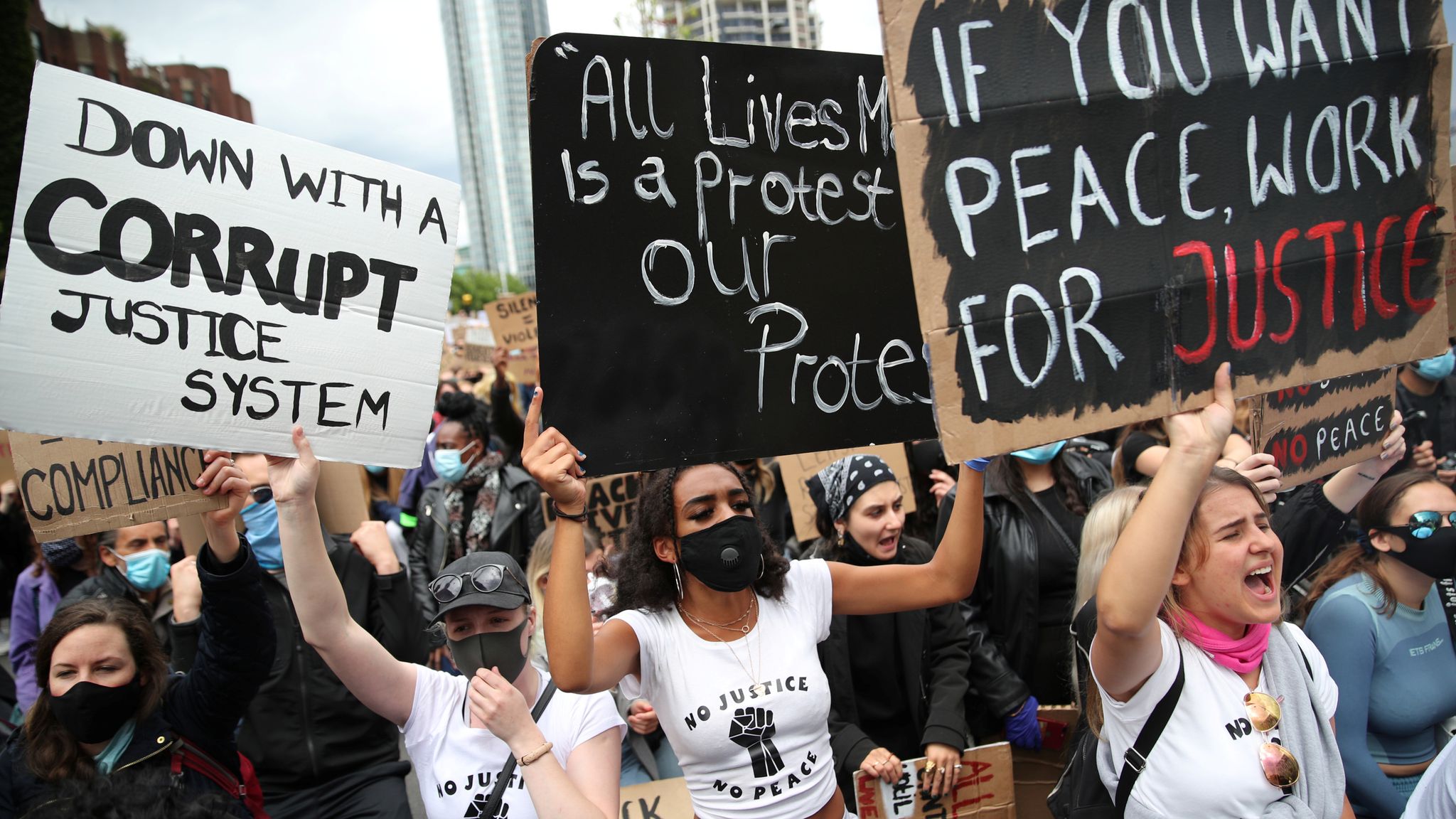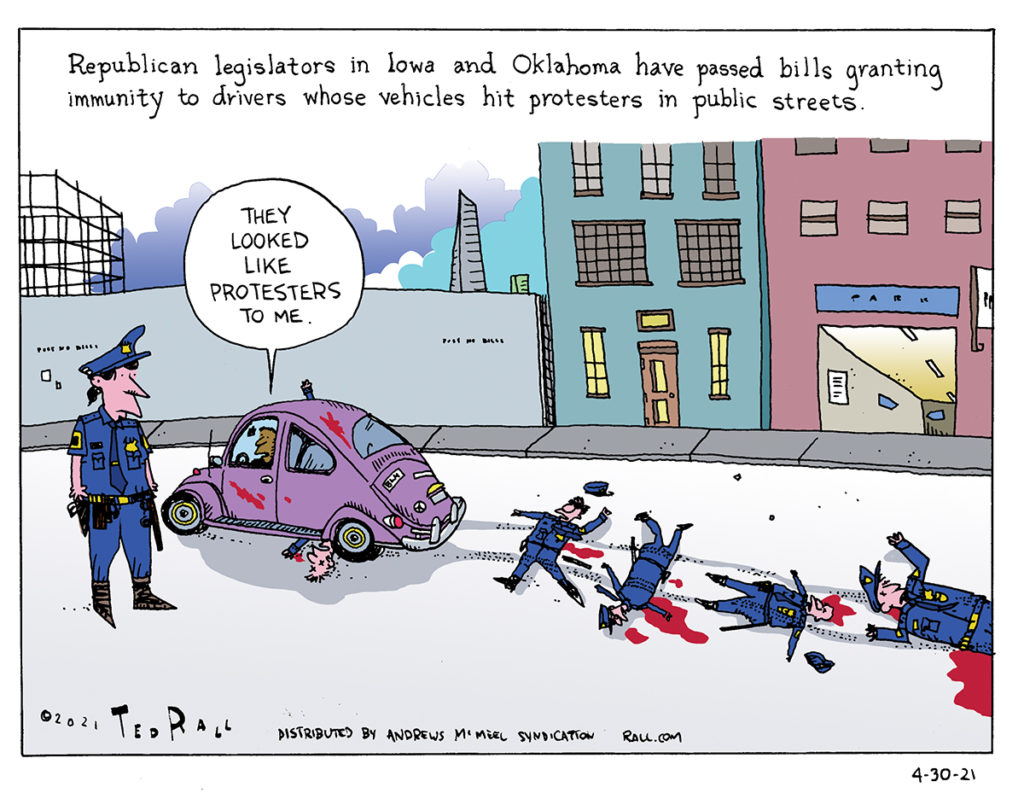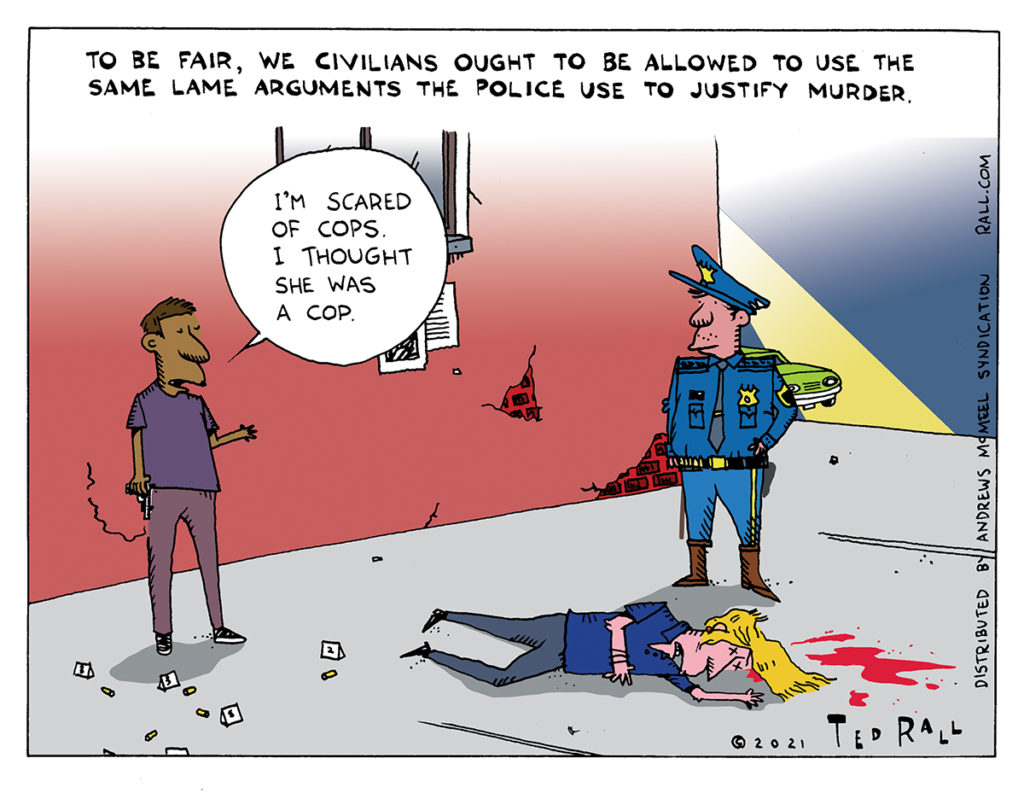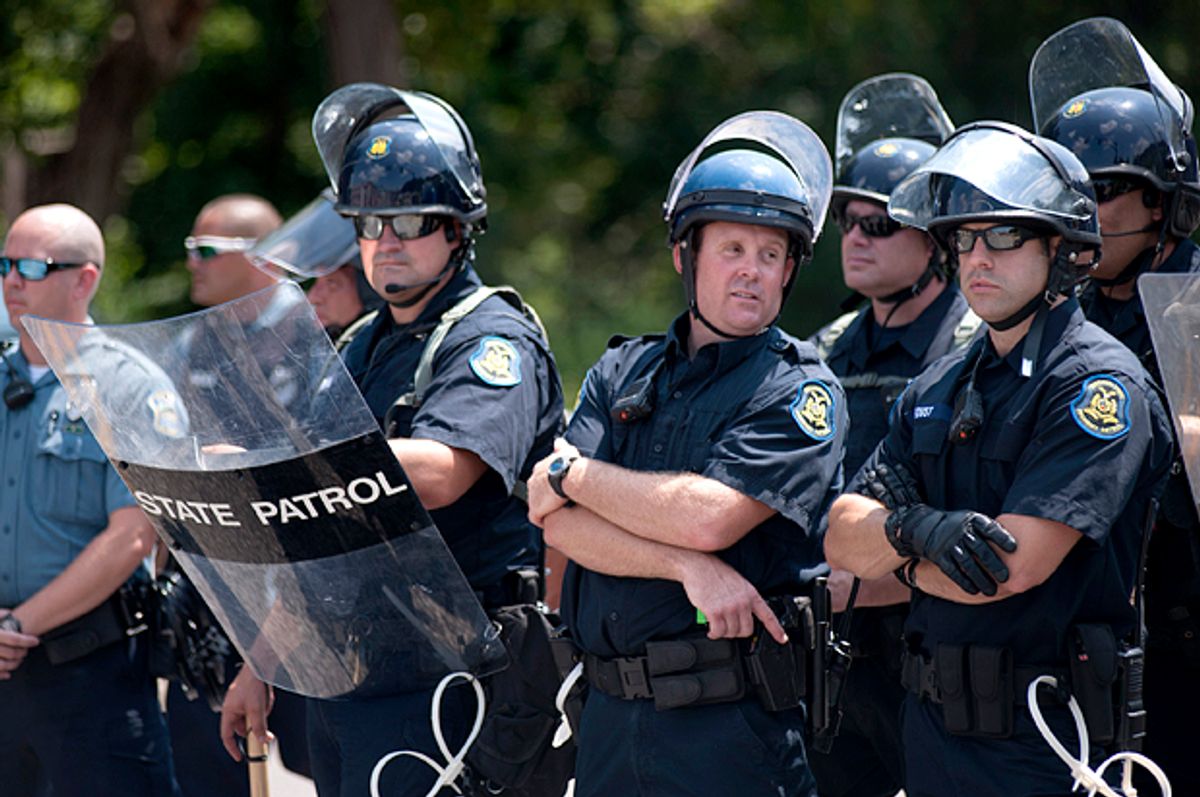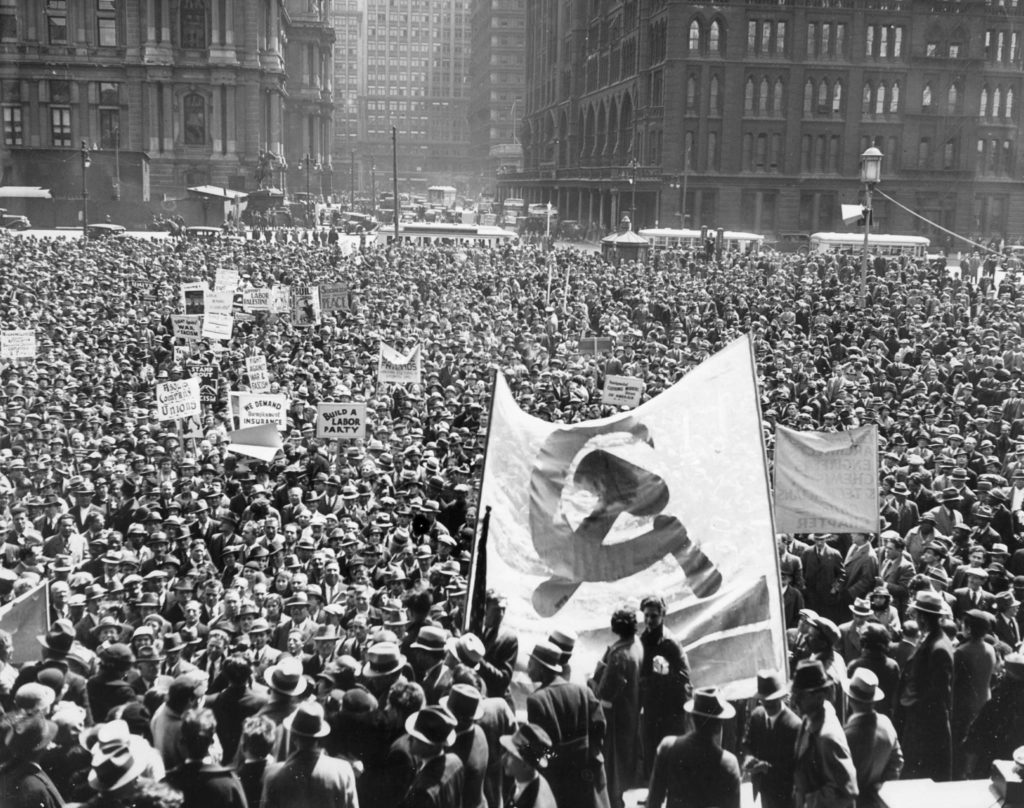
We Americans are repeatedly told that the United States is a conservative country in which the 50-yard line of ideology is situated significantly to the right of the Western European representative democracies from which our political culture derives and to which we are most often compared. But there is a gaping chasm between the policy orientation of the two major parties that receive mainstream-media coverage and the leanings of the American people they purport to represent.
Gallup’s decade-plus poll of basic opinions consistently finds that four of ten Americans have a positive view of socialism. (Half of these are also favorably predisposed toward capitalism.) When given a chance to demonstrate that, they do. Senator Bernie Sanders, a self-described “democratic socialist,” received 43% of the Democratic primary popular vote in 2016 and 26% in 2020. Four members of the Democratic Socialists of America are currently serving in Congress. Despite a century of Cold War reactionary Cold War suppression and McCarthyite propaganda, U.S. voters have moved more left since the heyday of the old Socialist Party, whose four-time presidential standardbearer Eugene Debs peaked at 6% in 1912.
History is punctuated by periodic spasms of protest that reveal Americans’ yearning for a world with greater economic equality, a merciful justice system, increased individual rights and the prioritization of human needs over corporate profits: the Black Lives Matter demonstrations and riots of 2020, Occupy Wall Street in 2011, marches against the 2003 invasion of Iraq, the 1999 Battle of Seattle, etc., etc., all the way back to the women’s suffrage and abolitionist movements at the dawn of the republic. These leftist movements were ruthlessly crushed by state violence and marginalization by the media before, in some instances, ultimately achieving their goals. Like streetcar tracks that keep having to be repaved over as asphalt erodes, however, fundamental human cravings for fairness and equality always reemerge despite the U.S. political system’s suppression.
I write this at one of those times between uprisings, when the presence of the Left in Americans’ lives feels irrelevant. (We’re talking here about the actual, socialist/communist-influenced Left of the sort we find in Europe, not the corporate “liberal” Democratic Party.) The Green Party, the nation’s biggest Left party, received 0.2% of the vote in the last presidential election; it will probably not appear on the ballot in many states, including New York, this year. There are no sustained street protests about any issue, including the Supreme Court’s radical repeal of abortion rights. Israel’s war against Gaza inspired one major (over 100,000 attendees) antiwar demonstration, in Washington, and it was matched in size by an opposing march in favor of Israel. Sanders and his fellow socialists have been absorbed into the Democratic Borg.
What’s Left?
There is no organized Left in the U.S. We are pre-organized. We are bereft of leaders. We have no presence in the media. We have no realistic prospect of having our positions aired, much less seriously considered and debates or enacted into law.
The Left may not exist as a political force. Yet we exist. Polls show that there are tens of millions of individual Leftists here in the United States. Sanders’ massive campaign rallies, with tens of thousands of attendees in numerous cities, proved that we’re able and willing to mobilize when we feel hope. Our record of taking to the streets to fight racist cops and warmongers and strikebreakers and gaybashers, despite formidable risks, point to our revolutionary spirit.
Four out of ten Americans few socialism favorably. How many more would feel the same way if they were exposed to leftist ideas? What if there was a socialist party that might possibly win?
Some readers criticized my 2011 book “The Anti-American Manifesto” because it called for revolution, or more accurately for opening rhetorical space for revolution as a viable political option, without laying out a step-by-step path for organizing a revolutionary organization. My omission was intentional. Allowing ourselves psychological access to the R-word must precede organization, revolution must be led by the masses rather than an individual, and in any case I am not blessed with the gifts of an organizer and wouldn’t know where to begin to build a grassroots movement. Still, no doubt about it, we have a lot to do. We must agitate and confront and organize and work inside electoral politics and out in the streets.
But for what?
What do we want?
What should we fight for?
Karl Marx and his socialist contemporaries would call this a programme—a list of demands and desires, like a political party platform in the not-so-distant past, which confronts the biggest problems facing us and lay out specific ways to solve them if and when we win power at the ballot box or seize power at the point of a gun as the culmination of a revolutionary movement.
We need a coherent vision for the country. We must build credibility by demonstrating that we know what has people worried, terrified and merely annoyed; successfully identifying people’s concerns shows that we get it, that we get them. We need solutions to their problems. We need to walk people through our ideas, listen to their thoughts and adjust our programme in response to their feedback.
What is the Left?
The Left is the idea that everyone is entitled to the good things in life by virtue of existing, that we should all have equal rights and opportunities and that the basic necessities of life like food, shelter, healthcare, education and transportation should be guaranteed by the government.
In this richest nation that has ever existed anywhere, albeit the one with the biggest wealth gap, we can get there. But we will never accomplish anything within the constructs of the electoral politics trap. Never has the dysfunction and uselessness of the duopoly been clearer than in this election cycle, when most voters say they wish neither of the two major-party candidates were running.
Let’s figure out how.
Next week, I’ll take a look at the tax code, federal government revenues and spending priorities.
(Ted Rall (Twitter: @tedrall), the political cartoonist, columnist and graphic novelist, co-hosts the left-vs-right DMZ America podcast with fellow cartoonist Scott Stantis. You can support Ted’s hard-hitting political cartoons and columns and see his work first by sponsoring his work on Patreon.)

